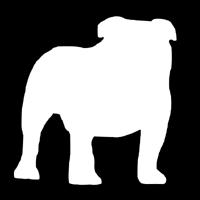Doberman Pinscher


Description
The dog is of medium size, with a square body, and a wedged shaped head. Compactly built, muscular, powerful, and fast. It has an elegant carriage, a magnificent head in short an uncluttered designer dog with a short gleaming coat over a sleek muscular frame. Historically the ears of the doberman were cropped at about three months, and then they were fixed to the head by tape for several months. The tails were docked when the dog was three days old. Both of these procedures were entirely cosmetic and modern trends are to allow the tail and ears to develop naturally, in appearance they resemble those of a hound. Some countries such as Great Britain have gone a step further and banned the docking of both by law. The American Kennel Club allows four colours for the doberman and they all involve the rust bred from the Manchester terrier. The accepted colours are black and rust, red and rust, blue and rust and fawn and rust. The most common colours are black and rust and red and rust, the other two are diluted forms of these colours.Temperament
Dobermans are usually protective but also
are sweet and docile family dogs. This breed is brave, intelligent and
loyal. However some Dobermans are very nervous and aggressive. This
breed needs early socialization and obedience training when it is a
puppy and this regime should be continued until the dog is at least 18
months old. Dobermans do fine with older children if they are raised
with them. Male Dobes can be very aggressive with other male dogs and
shouldn’t be trusted with small pets and strange children. Dobermans
need lots of exercise and companionship and shouldn’t be left alone for
long periods of time. Dobermans are intelligent and easily trained but
not by a novice dog owner. This breed should spend a significant amount
of time at a dog training school. Dobermans make good guard dogs and
good watchdogs and are wary of strangers. This breed is not recommended
for the novice dog owner.Dobermans we have heard the Doberman was bred
for his aggressiveness, but in
the 21 st Century there are not many tax collectors wandering around
bandit territory needing protection, and those that are, usually face
the end of a gun, and in these circumstances even the exceptional
qualities of the Doberman is not that much protection. Committed
doberman breeders have been forced to produce doberman puppies with a
milder
temperament. They have been used as a working dog in a
variety if settings even being excellent therapy dogs.
Every dog must conform to "ideal" standards, and the doberman is
confident, stable and fearless, but when the breed of doberman is a show
dog then they are penalized for showing traits of aggression or
shyness.
There is emphasis on early socialization training for Dobermans,
without destroying their determined, alert, energetic temperament and
their fierce protective loyalty. The doberman is not a dog for the
inexperienced or the faint hearted; they need to interact with
people. They need things to occupy their inquisitive minds; they should
not be left for long periods or they can be destructive. This is one of
the many reasons why you should consider if a doberman is the correct
dog for you and the family, buying a doberman puppy is a big
responsibility.
Though in general a doberman is a dominant breed, individual
doberman dogs do vary widely. Though they do respond best when every
member of the family knows how to handle them, as they will dominate a
human if allowed to.
Health
Dobermans have an average life expectancy of between 10 and 14 years, but they are at increased risks for some health conditions which pet owners should be aware of. These conditions include dilated cardiomyopathy, wobbler disease, and von Willebrand disease. Other less common issues associated with Dobermans are hypothyroidism, cancer, progressive retinal atrophy, cataracts, glaucoma, and hip dysplasia.
info
courtesy:http://www.dog-breed-facts.com


 TT
TT












